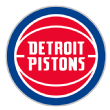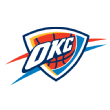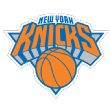The 2024-25 NBA playoffs are underway, beginning the two-month journey to the Finals. But which teams are truly built for the grind?
Sure, every team that has made it this far has its strengths, but the postseason is also designed to expose a roster's flaws. Each of these playoff squads are carrying statistical red flags -- some brighter red than others -- that could derail a deep run.
To determine what those flaws might be, I rated every team relative to league average across key metrics from the regular season, including pace, shooting frequencies and percentages, turnovers, star power and playoff experience. I then searched for the categories that have correlated most with making the Finals in the modern NBA -- since 2012-13, when the era of 3-point shooting really took off -- and which haven't. Finally, I applied that research to this year's playoff squads, looking for the teams whose main weaknesses are magnified by their importance in the playoffs.
The result is a tiered list of teams, grouped by how detrimental their worst statistical category might be to their title hopes.
Let's get to it!
Jump to a tier:
Big problems
Moderate concerns | Minor issues
Big problems?
These four teams have glaring weaknesses in highly predictive stats -- issues that could seriously undermine a deep playoff run.
 Orlando Magic
Orlando Magic
Stat category: 3-point percentage (31.8%, 30th)
Why it matters: A team's 3-point accuracy is among the most important predictors of being able to make the Finals in the current era of the NBA, where teams just recorded 42.2% on 3-pointers this regular season -- marking a league record, and the first time in history where more than 40% of shots were from beyond the arc. That leaves a team like the Magic, who ranked 18th in 3PA frequency and also made a league-low 31.8% of their attempts from the outside, somewhat stranded outside the prevailing trend of winning basketball.
Neither Paolo Banchero nor Franz Wagner -- the team's leading scorers -- have much of an outside game (both were at least 11% worse than average from 3) while both of the most frequent deep shooters in Orlando's regular-season rotation, Kentavious Caldwell-Pope and Tristan Da Silva, also fell below the league 3-point average. In fact, none of Orlando's top 10 minute-getters in the regular season broke average from 3.
Saving grace? Opponent block rate (8.7%, 10th)... The Magic are a tough team to deny at the rim, which comes in handy in the playoffs against a myriad shot-blocking bigs.
 Houston Rockets
Houston Rockets
Stat category: 2-point percentage (51.8%, 27th)
Why it matters: We just emphasized the importance of the 3, so it might sound surprising that making shots inside the arc could be just as important. But if we look at the past decade-plus of NBA postseason data, an offense's 2-point field goal percentage gets even more weight than 3-point percentage when predicting if a team will make the Finals. That's bad news for the Rockets, who aren't a particularly good shooting team anyway.
They were below average in 3-point accuracy and frequency while also finishing the regular season as one of the NBA's worst 2-point shooting teams -- three of their five leading scorers (Jalen Green, Fred VanVleet and Dillon Brooks) shot 48% or worse from inside the arc. The damage is mitigated by having the league's No. 1 rebounding rate, but teams that rely on offensive rebounds don't have a great record of reaching the Finals in recent years.
Saving grace? Wins Above Replacement (WAR) of best player (Amen Thompson at 8.8, 8th)... This category represents the outsized importance of postseason stars, and while Thompson doesn't have a high Usage Rate like other top stars, he is one of the best two-way players in the playoff field.
 Denver Nuggets
Denver Nuggets
Stat category: 3-point attempt rate (35.6% of FGA, 30th)
Why it matters: Unlike Orlando, the Nuggets are not a bad 3-point shooting team; Denver's 37.6% from 3 was well above average and ranked fifth best this regular season. Their offense -- granted, mostly under former coach Michael Malone -- focused on getting shots inside and/or getting to the free throw line, however. That's not necessarily a bad tactic, especially when many of those shots are either taken or facilitated by Nikola Jokić. But, only one of the Nuggets' top seven minute-earners, Michael Porter Jr. (and two of the top nine), took 3s at a greater than league-average frequency, leaving the deep shot as a nice option but nowhere near a focus.
In recent postseasons, contenders have needed to have a steady diet of 3s in their shot selection, with teams that were above average in 3-point attempt rate tending to go further even after controlling for their accuracy. And if we were thinking this might change under new coach David Adelman, the Nuggets' 3-point attempt rate (32.8%) in the final three games of the regular season was lower than it had been under Malone (35.7%).
Saving grace? WAR of their best player (Jokić at 17.9, 1st)... Having a player of Jokić's caliber, coming off one of his best seasons -- even by the standards of a three-time MVP -- covers up most, if not all, weaknesses a team might have.
 Los Angeles Lakers
Los Angeles Lakers
Stat category: Team free throw rate (27.1 FTAs per 100 FGA, 1st)
Why it matters: Now we get into the territory of seemingly positive categories -- such as getting to the free throw line a lot -- actually being held against teams in the playoffs. If one digs into the postseason data, it makes sense. Teams that rely on free throws for a large share of their offense can do plenty well during the regular season, when whistles are plentiful. But when games are called more tightly in the playoffs (FTA per 100 FGA has dropped in each of the previous two postseasons), that strength can turn into a liability.
These Lakers will serve as a magnified test case for this trend, as their highest-usage trio of players by far -- Luka Dončić, LeBron James and Austin Reaves -- all got to the line at an above-average rate, with Dončić and Reaves in particular ranking among the league's most frequent foul-drawers.
Saving grace? Previous playoff experience (2183.8 minutes per player, weighted by 2024-25 minutes, 2nd)... A long-running lesson of the NBA playoffs is that previous experience matters, and only the Boston Celtics have more of it on their roster than the Lakers do.
Moderate concerns
These red flags aren't the end of the world for these seven teams, but they're still risky, especially against good playoff opponents or when calls don't go a team's way.
 Golden State Warriors
Golden State Warriors
Stat category: 2-point percentage (52.8%, 23rd)
Why it matters: Golden State's shooting inside the arc isn't quite as negative as Houston's was, so it gets downgraded to a moderate concern in this tier list. Still, the Warriors are not a great finishing team inside and they were one of the worst midrange shooting teams in the NBA this regular season. Smartly, that's not a huge part of their game plan anyway, but it still would be nice to have more reliable conversion rates on the interior for a team that ranked 15th in offensive efficiency.
Neither Stephen Curry nor Jimmy Butler III made their 2-pointers at a league average rate this season, and in fact, none of the Warriors' top nine minute-earners had a 2-point percentage at or above NBA average.
Saving grace? Previous playoff experience (1960.6 minutes per player, weighted by 2024-25 minutes, 3rd)... Just like the Lakers, the Warriors are loaded with prior postseason experience, a number that got even better with the midseason addition of Butler, a two-time NBA finalist.
 Milwaukee Bucks
Milwaukee Bucks
Stat category: Free throw attempt rate (26.8 FTA per 100 FGA, 3rd)
Why it matters: As mentioned earlier, this stat is a general problem for would-be contenders who are overly reliant on free throws once they get to the playoffs and the trips to the line dry up. But the Bucks are also one of the teams driving this trend in the postseason data, as Giannis Antetokounmpo ranked No. 3 in free throw rate this regular season and perennially ensures the Bucks are one of the heaviest foul-drawing teams in the NBA most years.
Antetokounmpo's free throw percentage has, at times, been a source of concern in the postseason, but his rate of getting to the line has also tended to drop (relative to league average) in the playoffs. The same is true of running mate Damian Lillard, and their collective ability to draw fouls mostly powered Milwaukee's sky-high regular-season FTA rate.
Saving grace? WAR of best player (Antetokounmpo at 12.5, 3rd)... At the same time, the 2021 NBA champ is such a force of nature that his ability to carry the Bucks deep into the playoffs cannot be dismissed.
 Detroit Pistons
Detroit Pistons
Stat category: Opponent FT rate (27.6 FTA per 100 FGA, 27th)
Why it matters: All this time has been spent pointing out that free-throw-reliant offenses tend to do worse than expected in the playoffs, as the whistles they've come to expect never get blown. But the same doesn't seem to be true on the other side of the ball -- teams that foul opponents and send them to the line more tend to make the Finals significantly less than teams that are more careful with their fouling.
Why is this? One theory: Playoff games are slower and more half-court-heavy, which amplifies the importance of every possession. Giving away free points at the line becomes even more damaging, and teams might control their own rate of fouling more than the rate of drawing fouls on offense.
Either way, the Pistons sent opponents to the line a lot this season, and while rim protection was important for a team that blocked a good number of shots, Isaiah Stewart, Ausar Thompson and Jalen Duren were also among the NBA's most prolific foulers.
Saving grace? Two-point percentage (55.0%, 16th)... The Pistons get credit for this one, despite ranking in the middle of the pack, because of the weight in predicting Finals teams. The same Detroit trio mentioned above for their fouls also had strong 2P% numbers this season.
 Oklahoma City Thunder
Oklahoma City Thunder
Stat category: Opponent FT rate (27.2 FTA per 100 FGA, 26th)
Why it matters: The Thunder's seemingly most glaring weakness -- youth and a lack of playoff experience -- is at least better than it was a year ago, which leaves Oklahoma City in a similar place to Detroit in terms of foul-proneness. OKC was one of the NBA's most active defensive teams, leading the league in steals per 100 possessions (10.3) and ranking second in blocks per 100 (5.7) -- and that was with prolific shot-swatter Chet Holmgren missing 50 games.
So there's no question that fouls are the other side of the defensive coin in exchange for the Thunder's excellent numbers elsewhere. Still, if an area of concern must be found for a team that won 68 games and posted a net rating (+12.8) second only to the 1995-96 Chicago Bulls in the post-merger era, this is it.
Saving grace? WAR of best player (Shai Gilgeous-Alexander at 17.8, 2nd)... However you order them, Gilgeous-Alexander and Jokić were far and away the best players in the league, and SGA will most likely win MVP. That type of player goes to the Finals a disproportionate amount of the time.
 Memphis Grizzlies
Memphis Grizzlies
Stat category: Opponent FT rate (26.7 FTA per 100 FGA, 25th)
Why it matters: This trilogy of foul-prone squads concludes with the Grizzlies, who are similar to the Thunder in that they also ranked among the block-and-steal-rate leaders on defense, helping to fuel a top-10 unit on that side of the ball.
You probably don't get as much disruption from the likes of Zach Edey, Scotty Pippen Jr., Jaren Jackson Jr. and Brandon Clarke (who is out for the year) without sending some opponents to the free throw line along the way. Still, the Grizzlies fit the profile of a team whose defensive tendencies might not be fully conducive to a prolonged playoff run.
Saving grace? Two-point percentage (55.6%, 9th)... Memphis is a solid shooting team inside the arc, with eight of their top 13 minute-getters converting at or above the league average 2P%, and the rest all being within 5% of average.
 New York Knicks
New York Knicks
Stat category: 3-point attempt rate (38.2% of FGA, 28th)
Why it matters: Like Denver, the Knicks aren't bad at knocking down 3s when they take them -- New York hit 36.9% of them during the regular season, good for eighth best -- but the 3 isn't a huge aspect of the shot profiles for any of their most frequently used players, with the exception of Miles McBride (who took 57% of his shots from the outside).
Many more of the Knicks are grounded in the interior, whether it be Karl-Anthony Towns' skills as an inside scorer and finisher or Jalen Brunson's ability to attack the basket off the dribble. But we've also seen opponents diagnose and adapt to stopping New York's bread-and-butter offensive plays, which can be a particular problem in a seven-game series.
Saving grace? Two-point percentage (55.8%, 8th)... The flip side of the Knicks' lack of reliance on the 3 is that they are good at converting the 2s they do take at the league's fourth-highest rate per 100 possessions. Josh Hart made nearly 62% of his 2-pointers, an incredible rate for a Swiss-Army-knife type of forward.
 LA Clippers
LA Clippers
Stat category: 3-point attempt rate (38.7% of FGA, 25th)
Why it matters: It is somewhat shocking that a team led in scoring by James Harden would be among the league's least reliant teams on 3s. But the Clippers had an interesting distribution of shots among their rotation players, with players shooting more 3s than average (Harden, Norman Powell, Kris Dunn, etc.), others shooting well fewer than average, if any (Kawhi Leonard, Ivica Zubac, Derrick Jones Jr.) and only Nicolas Batum really bombing away at a rate significantly above a 50-50 mix of 2s and 3s. (Batum took 85% of his shots from 3.)
The Clippers might have the ability to ramp up the 3-point shooting more than other teams in this bucket, but it's worth keeping an eye on.
Saving grace? Previous playoff experience (1820.7 minutes per player, weighted by 2024-25 minutes, 4th)... Much of this is driven by Harden and Leonard, but Batum and Powell bring postseason experience as well.
Minor issues
This five-team group has lesser problems that could matter in a tight series or a particular matchup -- but they are unlikely to be fatal flaws. These teams' weaknesses don't need a "saving grace" to offset them.
 Miami Heat
Miami Heat
Stat category: 2-point percentage (53.8%, 20th)
Why it matters: There are plenty of big-picture reasons why the Heat are probably not going to make a Finals run -- chief among them simply being the first-round matchup they drew as the first-ever 10-seed to make it out of the NBA play-in tournament: the 64-win Cleveland Cavaliers.
But the Heat's comparatively weak 2-point conversion rate is another one of them. It might be most symbolized by the odd 2P shooting arc of Bam Adebayo, who went from a very good 56.5% inside the arc in his first five NBA seasons to shooting just 53.1% since -- a drop from 8% better than league average to 3% worse.
 Indiana Pacers
Indiana Pacers
Stat category: 3-point attempt rate (40.0% of FGA, 21st)
Why it matters: The Pacers' strong association with the play of Tyrese Haliburton -- one of the league's most prolific 3-point shooters among big-time scorers -- masks the fact that Indiana is not a heavy-duty shooting team from outside the arc. Beyond Haliburton, none of their top-seven minute-earners were significantly above average in their share of shots from 3-point range, while Pascal Siakam, Bennedict Mathurin, Andrew Nembhard and T.J. McConnell were well below league average.
Indiana still ranked No. 9 in offensive rating despite the lower rate of shooting 3s, so it might not matter too much, but they are easier to defend from the outside than other teams in their same tier of title contender.
 Boston Celtics
Boston Celtics
Stat category: Opponent assist rate (opponents assist on 59.6% of made FGs, 29th)
Why it matters: The fact that such a fringe category represents the Celtics' biggest red flag in the tendencies that predicted Finals teams might tell you something. Boston was a positive versus league average in most categories this season, especially the ones that matter most in the playoffs, which left me scraping the bottom of the barrel for weaknesses.
That said, it's curious that teams that allow fewer assists -- typically a marker of denying ball movement, which Boston is excellent at thanks to its many tough perimeter defenders -- have historically fared worse in the playoffs.
 Minnesota Timberwolves
Minnesota Timberwolves
Stat category: Free throw attempt rate (24.9 FTA per 100 FGA, 10th)
Why it matters: Led by the trio of Anthony Edwards, Julius Randle and Rudy Gobert, the Wolves have excelled at getting to the free throw line this season despite ranking 25th as a team in 2-point attempts per 100 possessions (2-pointers result in drawing fouls far more often than 3s do.)
This does open Minnesota up to potentially not getting the whistles it needs in the playoffs, but it bears mentioning that each of the Wolves' top-five scorers last season (Edwards, Karl-Anthony Towns, Naz Reid, Mike Conley, Gobert) was at or above his regular-season FTA rate during the team's surprising West final loss to the Dallas Mavericks. Clearly, not getting the usual calls was not Minnesota's main issue.
 Cleveland Cavaliers
Cleveland Cavaliers
Stat category: Playoff experience (657.6 minutes per player, weighted by 2024-25 minutes, 15th)
Why it matters: Having been on the biggest stage before matters in the playoffs, and the Cavaliers have players with prior experience, most notably including Donovan Mitchell (2,032 previous postseason minutes) and Max Strus (1,611) among their rotation members. (Tristan Thompson's 2,616 previous minutes might not matter as much, if he doesn't see the floor.)
But while the Cavs' roster average of around 658 minutes, weighted by how much each player played this season, is higher than the comically low number we saw from Oklahoma City last season, it's still on the low side by historical standards. Teams with between 500 and 1,000 previous postseason minutes on average tend to win slightly fewer games in the playoffs than we would expect based on their regular-season ratings -- which makes this a minor concern for Cleveland, but a concern nonetheless.
